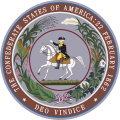
The United States Secretary of the Treasury is the head of the United States Department of the Treasury, and is the chief financial officer of the federal government of the United States. The secretary of the treasury serves as the principal advisor to the president of the United States on all matters pertaining to economic and fiscal policy. The secretary is, by custom, a member of the president's cabinet and, by law, a member of the National Security Council.

The Department of the Treasury (USDT) is the national treasury and finance department of the federal government of the United States, where it serves as an executive department. The department oversees the Bureau of Engraving and Printing and the U.S. Mint. These two agencies are responsible for printing all paper currency and minting coins, while the treasury executes currency circulation in the domestic fiscal system. The USDT collects all federal taxes through the Internal Revenue Service; manages U.S. government debt instruments; licenses and supervises banks and thrift institutions; and advises the legislative and executive branches on matters of fiscal policy. The department is administered by the secretary of the treasury, who is a member of the Cabinet. The treasurer of the United States has limited statutory duties, but advises the Secretary on various matters such as coinage and currency production. Signatures of both officials appear on all Federal Reserve notes.

The United States Revenue Cutter Service was established by an act of Congress on 4 August 1790 as the Revenue-Marine upon the recommendation of Secretary of the Treasury Alexander Hamilton to serve as an armed customs enforcement service. As time passed, the service gradually gained missions either voluntarily or by legislation, including those of a military nature. It was generally referred to as the Revenue-Marine until 31 July 1894, when it was officially renamed the Revenue Cutter Service. The Revenue Cutter Service operated under the authority of the U.S. Department of the Treasury. On 28 January 1915, the service was merged by an act of Congress with the United States Life-Saving Service to form the United States Coast Guard.

Lot Myrick Morrill was an American politician who served as the 28th governor of Maine, as a United States senator, and as U.S. secretary of the treasury under President Ulysses S. Grant. An advocate for hard currency rather than paper money, Morrill was popularly received as treasury secretary by the American press and Wall Street. He was known for financial and political integrity, and was said to be focused on serving the public good rather than party interests. Morrill was President Grant's fourth and last Secretary of the Treasury.

The president of the Confederate States was the head of state and head of government of the Confederate States. The president was the chief executive of the federal government and commander-in-chief of the Confederate Army and Navy.
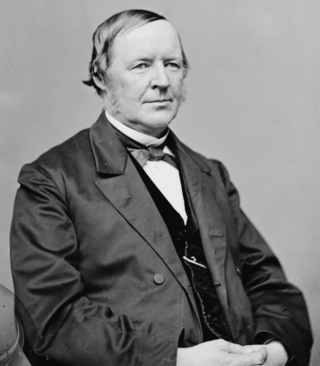
Hugh McCulloch was an American financier who played a central role in financing the American Civil War. He served two non-consecutive terms as U.S. Treasury Secretary under three presidents. He was originally opposed to the creation of a system of national banks, but his reputation as head of the Bank of Indiana from 1857 to 1863 persuaded the Treasury to bring him in to supervise the new system as Comptroller of the Currency 1863–1865. As Secretary of the Treasury 1865–1869 he reduced and funded the gigantic Civil War debt of the union, and reestablished the federal taxation system across the former Confederate States of America. He tried but failed to make a rapid return to the gold standard.

Howell Cobb was an American and later Confederate political figure. A southern Democrat, Cobb was a five-term member of the United States House of Representatives and the speaker of the House from 1849 to 1851. He also served as the 40th governor of Georgia (1851–1853) and as a secretary of the treasury under President James Buchanan (1857–1860).

Philip Francis Thomas was an American lawyer, mathematician and politician. He served in the Maryland House of Delegates, was the 28th Governor of Maryland from 1848 to 1851, and was Comptroller of Maryland from 1851 to 1853. He was appointed as the 23rd United States Secretary of the Treasury in 1860 in the Buchanan administration. After unsuccessfully standing for the United States Senate in 1878, he returned to the Maryland House of Delegates, and later resumed the practice of law.
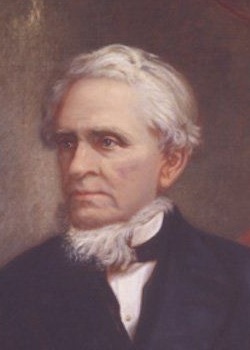
John Adams Dix was an American politician and military officer who was Secretary of the Treasury, Governor of New York and Union major general during the Civil War. He was notable for arresting the pro-Southern Maryland General Assembly, preventing that divided border state from seceding, and for arranging a system for prisoner exchange via the Dix–Hill Cartel, concluded in partnership with Confederate Major General Daniel Harvey Hill.
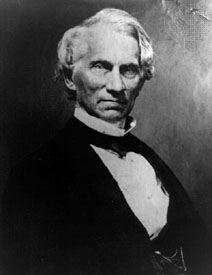
Christopher Gustavus Memminger was a German-born American politician and a secessionist who participated in the formation of the Confederate States government. He was the principal author of the Provisional Constitution (1861), as well as the founder of the Confederate financial system. As the first Confederate States Secretary of the Treasury, Memminger was the principal author of the economic policies of Jefferson Davis's administration.

The Confederate States Lighthouse Bureau was an administrative bureau within the Confederate States Department of the Treasury which was responsible for the upkeep of lighthouses and other navigational aids along Confederate shores.
Confederate gold refers to hidden caches of gold lost after the American Civil War. Millions of dollars' worth of gold was lost or unaccounted for after the war, and its possible location has been the source of speculation of many historians and treasure hunters. Allegedly, some of the Confederate treasury was hidden in order to wait for the rising again of the South and at other times simply so that the Union would not gain possession of it.
Edward Carrington Elmore was an American politician. He served as the Treasurer of the Confederate States of America during the American Civil War. His signature appears on collectible Confederate currency, and he designed several of the Confederacy's coins.
The Confederate Civil Service was the civil service of the Confederate States of America.

The Confederate States of America financed its war effort during the American Civil War of 1861–1865 through various means, fiscal and monetary. As the war lasted for nearly the entire existence of the Confederacy, military considerations dominated national finance.
The Confederate States Department of the Treasury was the department of the executive branch of the Confederate States of America responsible for the administration of the economic affairs of the Confederacy. These affairs including the issuing of debt, the collecting of taxes, the printing of money, and the administration of customs. The Department of the Treasury was led by the Secretary of the Treasury, a position which was established in legislation passed by the Provisional Confederate Congress in 1861.
Secretary of the Treasury most commonly refers to the United States Secretary of the Treasury.

The Cabinet of the Confederate States of America, commonly called the Confederate cabinet or Cabinet of Jefferson Davis, was part of the executive branch of the federal government of the Confederate States that existed between 1861 and 1865. The members of the Cabinet were the vice president and heads of the federal executive departments.
The Confederate States Naval Academy was an undergraduate academy in Richmond, Virginia, of the Confederate States of America that educated and commissioned officers of the Confederate States Navy. The CS Naval Academy was established by an act of the Confederate States Congress on April 21, 1862, and graduated a number of midshipmen before being disbanded on May 2, 1865, in Abbeville, South Carolina, subsequent to the fall of the Confederate States.
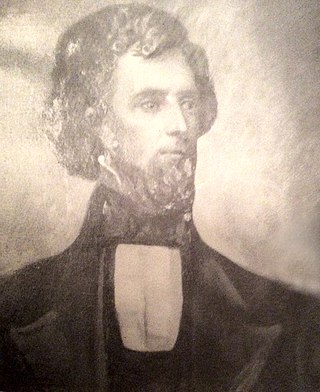
Robert Tyler was the eldest son of John Tyler, the tenth President of the United States, and Letitia Christian Tyler. He served as the Confederate Register of the Treasury during the American Civil War. Previously, Tyler served as private secretary for his father's presidential administration. In later life, he served as the editor of the Montgomery Advertiser.
